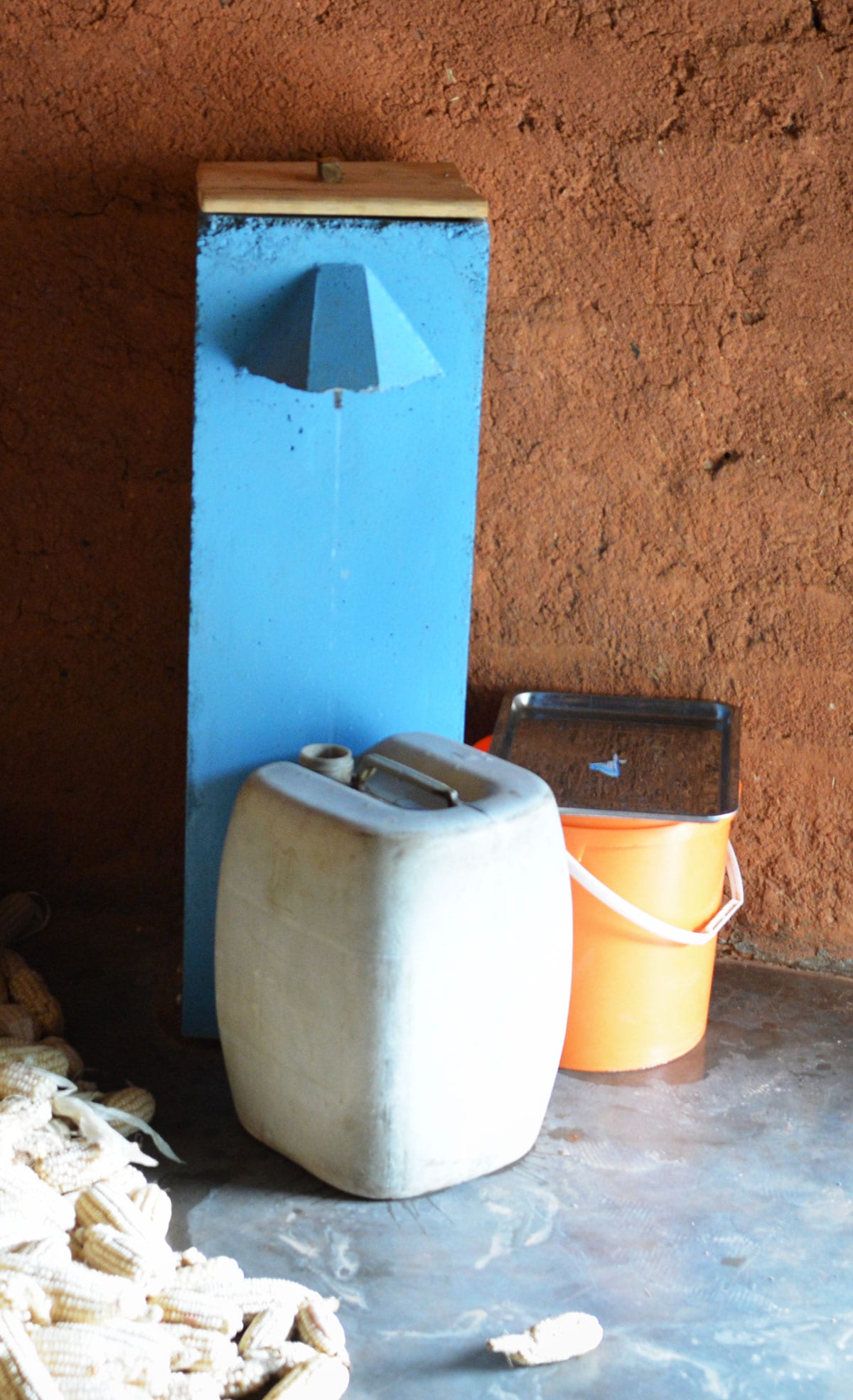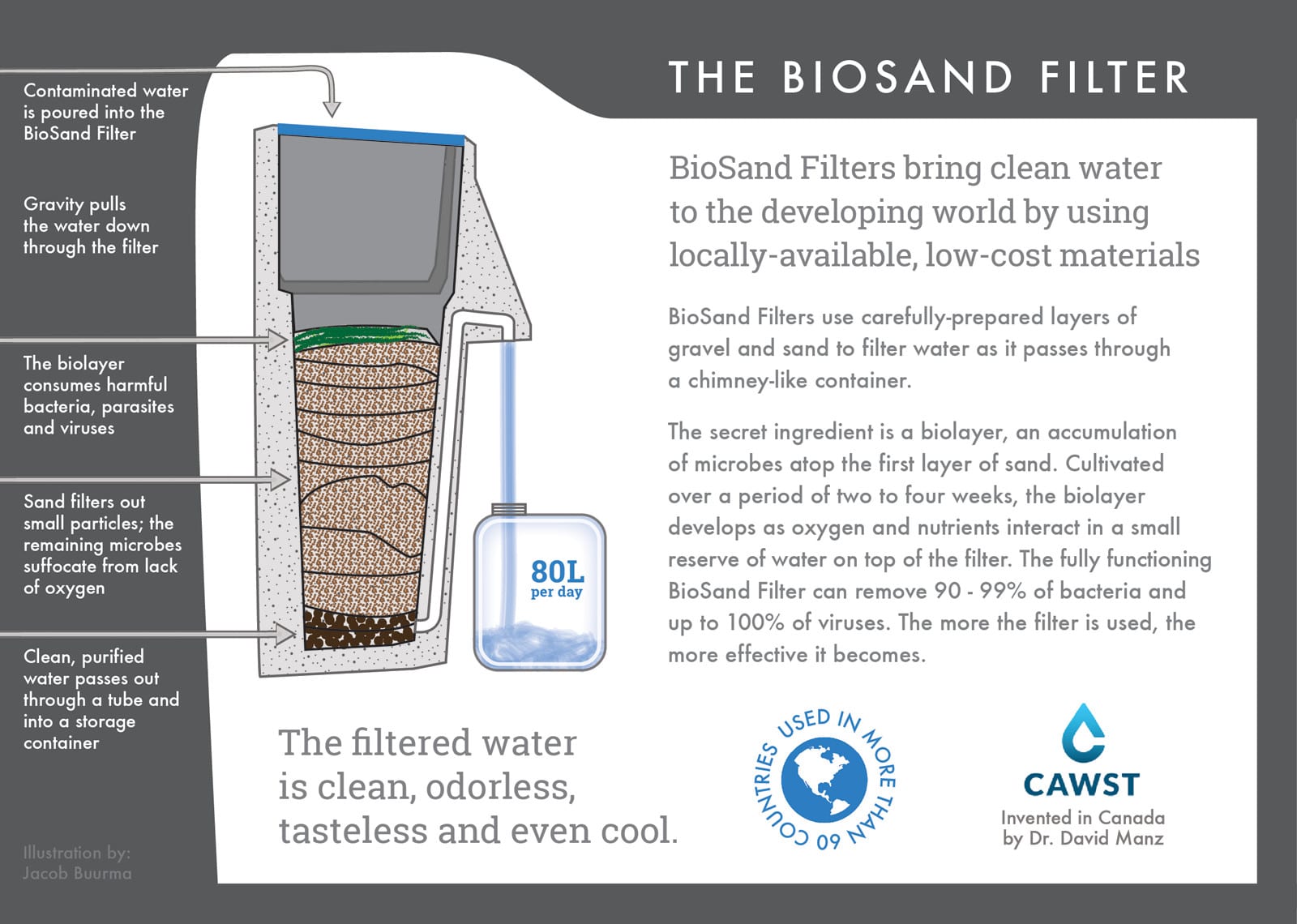While there are many water purification methods, nearly all of them rely on a source of power, complex manufacturing processes, frequent maintenance or replacement, or a continuous supply of chemicals. BioSand Filters (BSF) have none of these requirements. Designed by a Canadian engineer at the University of Calgary, BSFs:
- have no moving parts or mechanical or electrical components
- require no fuel or electricity
- are significantly less expensive than other options
- require very simple maintenance
- are constructed from materials available in almost every community
- are virtually indestructible and too heavy to steal.
A single BSF can purify up to 60-80 litres of water per day, enough to supply the needs for a household of 10 or more people. For all these reasons, BSFs are extremely well-suited to purify water in rural regions of the developing world.


Made from concrete, sand, and gravel, BSFs consist of a chimney-like container about 1 meter tall with a 20 cm square opening. The container is filled with several centimetres of coarse and fine gravel followed by carefully prepared fine sand. When the filter is filled with water the sand and gravel layers are fully submerged. In two to four weeks, a layer of microorganisms (the ‘biological layer’) grows on the surface. At this point the filter is ready for use.
BSFs purify contaminated water by several mechanisms. When dirty water from a contaminated stream or well is poured into the BSF:
- dirt and larger particles are trapped at the top of the sand layer
- the biological layer ‘eats’ a significant portion of the parasites and other microorganisms within the water
- fine sand traps remaining bacteria where they suffocate due to lack of oxygen.
Gravity then pulls the purified water to the gravel layer at the bottom and up a standpipe to a spigot. Water that exits the filter is clear, clean and safe (and even cool!).
While sand has been used for centuries to purify water, the sand preparation method and active biological layer of BSFs are uniquely effective at filtering heavily contaminated water. The process removes virtually all parasites and almost all bacteria and viruses. Because filters must be made locally, they offer other benefits to the community such as employment opportunities, business growth for local suppliers who can provide raw materials for the filters as well as providing a source of community pride.
The Centre for Affordable Water and Sanitation Technology (CAWST) in Calgary provides training and resources to organizations working to build BioSand Filters and to provide clean water in developing countries.
